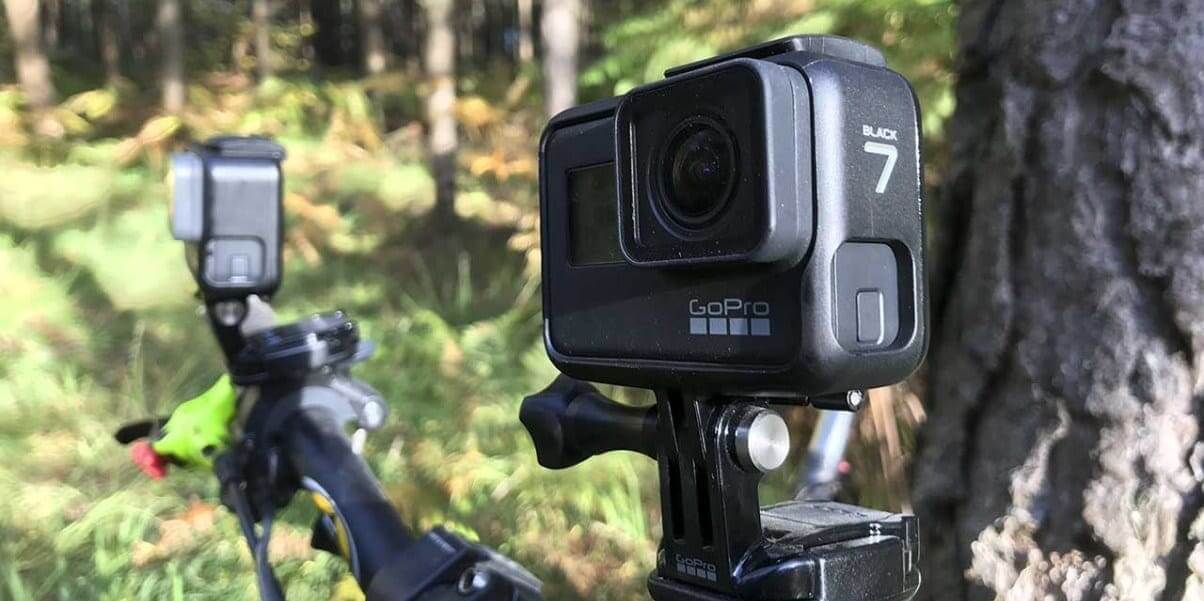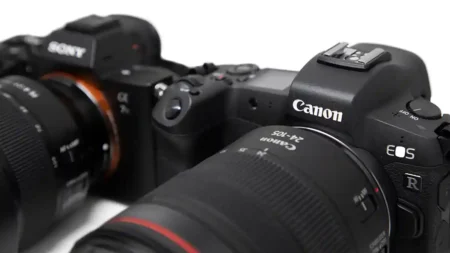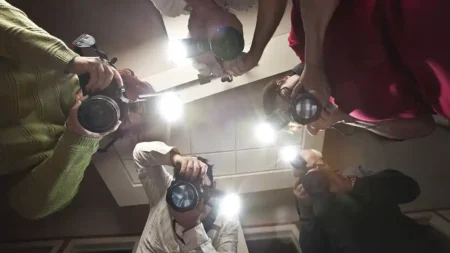GoPro Hero7 Black Snap Verdict
Don’t mistake the Hero7 Black for a small update. It may look similar to the Hero 6 and match the resolution and framerate, but when it comes to performance, it’s a huge leap forward.
The colour is the most apparent change, from grey to black, and as the GoPro powers up for the first time, it reveals an all-new interface that gives the camera a fresh feel.
Linking to the mobile app has been streamlined, no passwords or faffing, just follow the instructions and within a few moments, all is connected.
Flicking through the options using the touch screen and it reveals the new features such as HyperSmooth and Live Streaming. Activating these, as with all setting changes, is as easy as a quick swipe and tap.
Back home and the footage reveals the power of the new HyperSmooth feature, the fluid motion is mindblowing.
Live Streaming is equally easy to master, sign into your FaceBook account and within minutes you’re launched on to a world social platform broadcasting live.
There may be no leaps forward in the usual sense of quality, but when it comes to usability the GoPro accelerates forward, and HyperSmooth isn’t just excited it’s the most groundbreaking advancement we’ve seen from GoPro since they launched.
For GoPro Hero7 Black
- HyperSmooth
- Live Streaming
- Time Warp Video
Against GoPro Hero7 Black
- Expensive
- More steps to change frame rates and resolution
- Still no Fluro option
But now it seems the companies focus is returning to its core, with the release of three new action cameras that will cater to everyone from the entry level all the way through to expert.
GoPro Hero7 White is the all-new entry-level model
The GoPro Hero7 White is the all-new entry-level model, featuring a resolution of just 1080p at 60fps. This replaces the GoPro Hero 2018 which only launched a month or two back.
GoPro Hero7 Silver for the midrange
Next up is the GoPro Hero7 Silver which features 4K at 30fps and1080p at 60fps, and then resting at the top is the GoPro Hero7 Black.
I have to admit that I was dismissive of the 7 as soon as I saw the specifications, it seemed there was absolutely nothing new, and the significant new features all read as pure hype.
Whatever the Hero7 offered it was always going to be a hard sell, especially in the present climate, but a first read of the updates and it all looked terminal.
Top resolutions and frame rates for the new flagship GoPro all remain the same as its predecessor, as do the sensor and processor. The significant new features are image stabilisation and live streaming.
Surely mechanical stabilisation is the key to smooth footage and live streaming; well, use periscope, it’s all well integrated after all. So why add two new features that are essentially already out there if in different forms.
It was tough to warm, or even get excited about the Hero7 especially after so much anticipation, and even after seeing the Hero7 at Photokina I was still sceptical about the new GoPro being called a full new model and not just a firmware update or + version.
But then it arrived, and it was instantly apparent this was far more than any GoPro that had come before. This was GoPro like I’d never seen, this was GoPro evolved.
Features
Let’s flash through the features as quickly as possible as they’re the same, for the most part, as the GoPro Hero 6 Black.
The abridged version of this is, all the same as the Hero 6 Black, just with HyperSmooth electronic image stabilisation and Live Streaming built in, a Super Photo, enhanced photo HDR’y mode and some mic improvement that stops it from whistling, and that’s it, now you can skip to the rest of the Build Quality and handling or re-read essentially the same stuff as in the Hero 6 review.
On to the GoPro Hero7 Black’s features
It has 1080p at up to 240fps; this still outperforms anything else on the market, then you have 4K at 60fps, again that’s just being matched by other manufacturers but still pretty much leading the market.
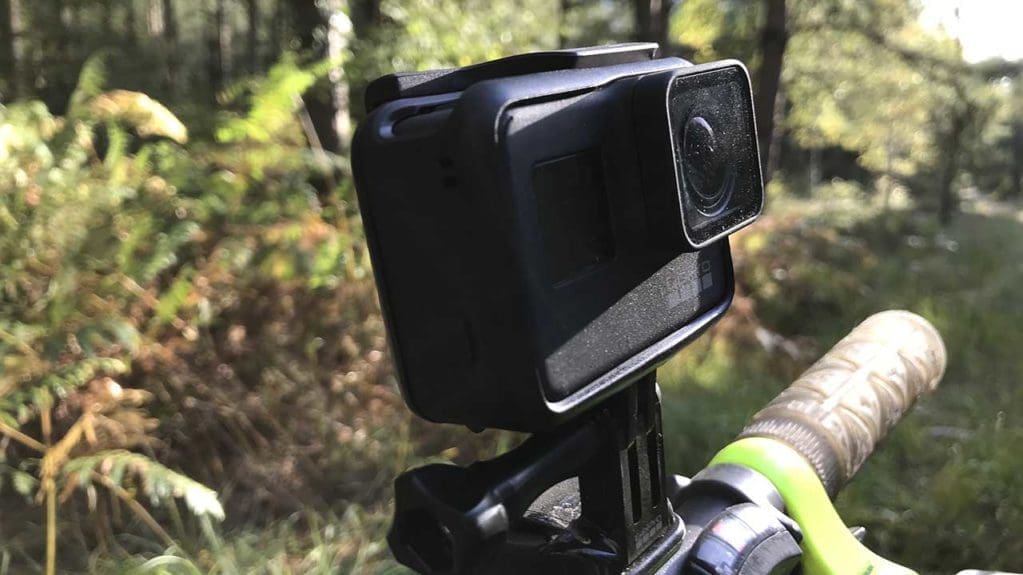
Then you have that GP1 processor, this handles all the cameras processing and is at the heart of all the GoPro recent features. In the 7 it’s been given a boost by the addition of an extra 1GB of RAM. Otherwise, the GP1 processor in the camera is exactly the same as the one used in the GoPro Hero6 Black.
The GP1 is matched to the sensor, still not 100% sure if the sensor is a Sony IMX or what generation it is, but looking at the image quality, it seems unlikely that it’s from any other manufacturer. What we do know is it’s a 1/2.3-inch CMOS
Alongside the usual adjustments, you have ProTune which is favoured by professionals as it enables you to produce footage that is easy to match with other cameras and allows some manual control over the capture.
Then, of course, it’s waterproofed up to 10 m out of the box, or pop on the waterproof housing, which is an optional extra, and you can take it down to 30m.
Battery life is also pretty impressive at around two hours depending on how you use it. Mine didn’t come with a battery but no matter it takes the same type as the Hero 5 and 6. On the back, you have the large touchscreen, and then there’s enhanced voice activation and control.
As with any good action camera you also have the compatible app, if you own an Apple Watch, then you can control the GoPro through that as well.
Is HyperSmooth image stabilisation really such a big feature?
Then there are the new features: HyperSmooth image stabilisation, live streaming and SuperPhoto.
GoPro HyperSmooth is the name for their enhanced in-camera EIS, and essentially GoPro has worked out how to give the footage a little bit more headroom to enable greater cropping into the image for the electronic image stabilisation.
This means that it works for 4K at 16:9 aspect ratio but not 4K at 4:3.
GoPro Live streaming is now integrated, just signup/into your chosen network, FaceBook at Launch, and in a few seconds you can get up running broadcasting yourself live to the world.
SuperPhoto is the new intelligent photographic mode and enables the camera to read the scene and apply enhancements to exposure, colour and contrast to get the best quality picture from the GoPro as possible. Essentially HDR.
To me, this all sounded like GoPro has merely applied a firmware update to the Hero7 and worked a rebrand, but it turns out there is just a little bit more to it.
Yes, the processor and sensor are identical to the Hero 6, but to boost the processing power, GoPro has doubled the RAM within. This increases it from 1GB to 2GB, this might not sound a great deal, but in a camera this is significant.
A Sneaky update and one GoPro don’t seem to have made much noise about.
There’s also a slight hardware change when it comes to microphones with additional shielding to help stop the whistle that you get when the GoPro is mounted on a bracket.
Updated feature wise, small yet significant.
Build quality and handling
There is no denying that there is very little difference between the GoPro Hero 6 and 7. The most noticeable change is, of course, the colour changing from grey to black, and rather than the discrete model number written on the side of the lens we can now see a far more visible GoPro logo an model number emblazoned on the side.
The real difference between the two models only becomes apparent when you line-up the Hero 6 and 7 side-by-side. The rubber texture has been smoothed out on the 7 and slight changes to the design of the speaker underneath, but otherwise, the foundation of the camera is identical.
As with the hero 5 and 6 the lens can be removed and replaced if scratched, but overall the entire new Hero7 is as well designed and robust as the previous versions.
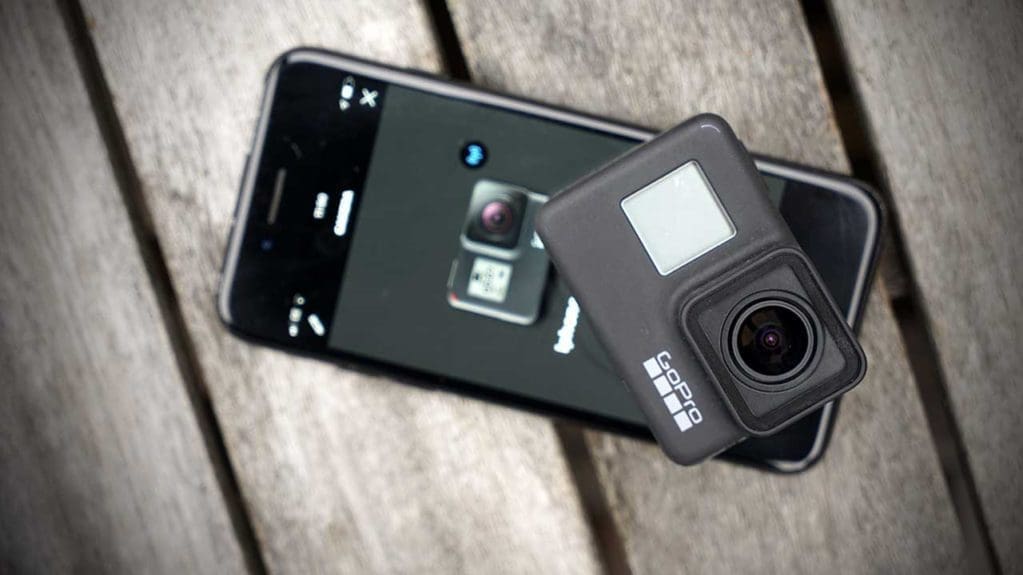
As ever the compact size of the GoPro is slightly fiddly to use, but then this is a camera that is designed to be mounted rather than handheld. Well, that was until the release of this version.
After some time with the new interface, I still have mixed emotions over whether it’s an improvement or not. Most of the settings are still quick and easy to get to, but those extra taps and slightly increased complexity just isn’t quite as intuitive as the simple approach taken by the old Hero5 and 6 version.
The resolution, frame rate and FOV are now all grouped, and a couple of taps are required to get into each set of options rather than the direct links that were available on the Hero 6.
How HyperSmooth works with aspect ratio
The new HyperSmooth feature also affects the cameras aspect ratios. On the Hero 6 at 4K and 2.7K you had a 4:3 option, on the Hero7 you can now switch between 4:3 and 16:9 by tapping the icon in the top left.
The camera will then highlight if HyperSmooth will be used or not. A side effect of the way that HyperSmooth works is that it will be active in 4K 16:9 but not 4K 4:3, if you shoot 1080p then you can film at up to 60fps with HyperSmooth, then 120fps with standard stabilisation and nothing at 240fps.
At 240fps you also get a warning that the camera is switching to HEVC which is one of the newer codecs, so you’ll need to ensure your computer can handle the footage.
There’s no doubt that the new framerates and features with the various, HyperSmooth, Standard Stabilisation, aspect ratios add a little more complexity to the control of the GoPro, but mostly it’s easy enough to work out.
Stick to 16:9 which is the most common TV aspect ratio anyway, and you’ll be fine. Switching to 4:3 gives you a little more headroom if you want to crop into the shot.
TimeWarp video and TimeLapse Video
Away from the video shooting the most impressive feature has to be TimeWarp video, we’re recently seen similar features on the DJI Mavic 2 Pro in the form of HyperLapse which was equally impressive.
Essentially it’s a timelapse setting, but with the use of the HyperSmooth feature, you get a new ultrasmooth motion time-lapse that just hasn’t been previously possible.
This mode is accessed by tapping the video icon at the base of the touch screen and then swiping left, swiping right will take you to photo.
Once in you have four options TimeWarp video, TimeLapse Video, TimeLapse Photo and Night Lapse Photo – I’ll bring you more on these features soon.
The other significant feature is, of course, the Live broadcast, and this is accessible through the app. Once loaded and the live view is activated a quick swipe across the bottom of the screen switched the camera mode from time lapse, Video, Photo through to Live.
Live mode when you first access it requires that you log in to your FaceBook account, once done you can then start to broadcast live to the world instantly. It’s all very quick and easy.
Performance
In use, the GoPro is as easy as ever to use with the touch screen giving you quick and direct access to all the settings and features you need.
The Voice activation as ever is handy, but I still feel like a twat talking to a camera in the middle of nowhere and prefer to use the touch screen or app instead.
The app is as ever well integrated, and setup and initial connection really couldn’t be easier. So much so that there’s very little to say about the setup process, download, start-up the app and GoPro and the app does the rest.
GoPro Hero7 footage
New features aside what’s core to GoPro is the image quality. As ever when testing, I initially left the camera on the default image quality settings except switching across to ProTune.
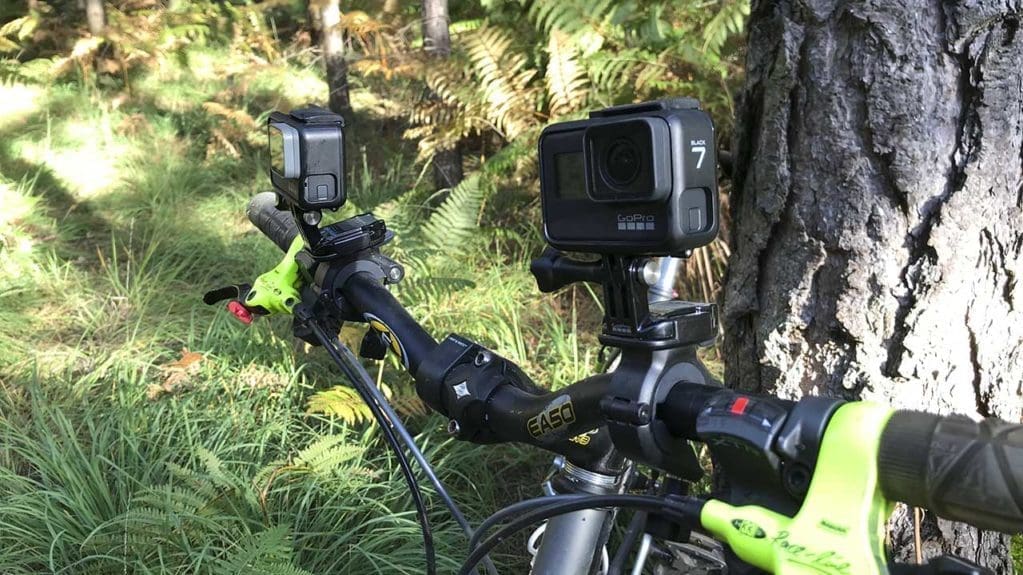
The quality setting left as default produced slight over-sharpening, however, it was possible to dial this down in the ProTune settings.
As with the Hero 6 the video quality is superb, vibrant colour, plenty of tone, detail and contrast.
This time around I had no issue with the lens, and all seemed stable enough, and it, as I tested the camera out on the trial, is felt good to be out using a true action camera.
Looking over the footage and the GoPro quality is apparent, there’s no sign of vignette, sharpness fall off and lens flare and chromatic aberration in high contrast areas are all well controlled,
I did find the default settings just a little overbearing and dialled down the sharpness a touch for a more natural look.
GoPro colour, as ever, gave that vibrant look to the footage, I would like to see a +/- option to dial it up or down a little as sometimes, it can look a little too over saturated.
Switching to ProTune and you can instantly see why the Pro’s love the camera, there’s just so much more to it, and the ability to change to a flat colour profile makes it far easier to match in the GoPro footage with other cameras.
GoPro footage, aside from the vibrance is known for the extensive fish-eye distortion and the Hero7 doesn’t fail to impress on this point. There is, of course, the ability to adjust the FOV if you need to switch to linear for some to camera presenting.
Is GoPro HyperSmooth any good?
As the prominent feature you expect it to be good; indeed the sample footage I saw demoed showed some exceptional examples, but it’s only when you see footage you’ve shot you get a feel for how good it is.
HyperSmooth is an absolute game changer; this elevates the GoPro Hero7 way beyond and GoPro that has come before.
It now not only enables you to film where you could never film before, but it does so at a quality only previously possible with a mechanical stabiliser.
Testing it out alongside the GoPro Karma grip and you can see the electronic stabilisation in action, and it is phenomenal, it’s hard to tell the footage from both apart.
But as there is no bulk to the solo Hero7 Black, it means that you can take it anywhere, even into the water. It’s also lighter which significantly extends its usability, and because the USB-C port isn’t taken up by being plugged into the Karma Grip, it means that you can plug in a mic.
HyperSmooth is a prominent feature, well beyond any resolution or frame rate jump and gives the GoPro Hero7 users access to one of the most versatile cameras on the market.
Image stabilization was initially bought it with the GoPro Hero 5 Black and although it was good it had the usual limitations that we’ve seen with other action cameras that featured EIS, mainly the cropping into the frame in order to accommodate the image alignment processing required to create smooth footage.
Verdict
The Hero7 was a camera that initially left me deflated, I’d been waiting a year trying to guess what would be coming up; 8K, live streaming, fluro colours and in the end I got live streaming and better stabilisation.
This is quick first sample of the footage from the GoPro Hero7 Black next to that of the GoPro Hero6 Black. You can see the difference the HyperSmooth feature makes.
Two significant features that I thought we already had.
But then I tried it, and it was a revelation. HyperSmooth is insane, it’s the best thing I’ve ever seen and opens up the GoPro to all sorts of uses outside of the core extreme sports market.
The stabilisation enables you to shoot pro level footage easily and being free of mechanical stabilisation grips allows you to take the GoPro to more places than ever before.
It also means that it’s lighter as a rig than anything else on the market, and let’s not forget that the quality of the GoPro footage is already accepted as good enough to broadcast.
Now you can realistically use the GoPro as a high-quality camcorder, yes you can use it for extreme sports but equally use it for capturing decent footage of family and friends.
But, it’s so much more, on a lightweight rig, with the Rode VideoMicro, and you have a full vloggers kit. Not just one that enables you to record footage for editing later but one that will allow you to broadcast to the world instantly.
The new features are incredible, and for me having checked out and used the Hero 6, 5 and Hero 2018 it’s easy to see that this is the most advanced GoPro to date.
The GoPro Hero7 Black is the most exciting must have a camera on the market. It’s more versatile than most people would imagine and now it’s also a powerful imaging tool.
For vloggers and social media personalities the GoPro Hero7 offers more than any other imaging device on the planet. The Hero7 Black is the most understated release of all time, and I’d go as far to say as the best all-around camera of 2018.
